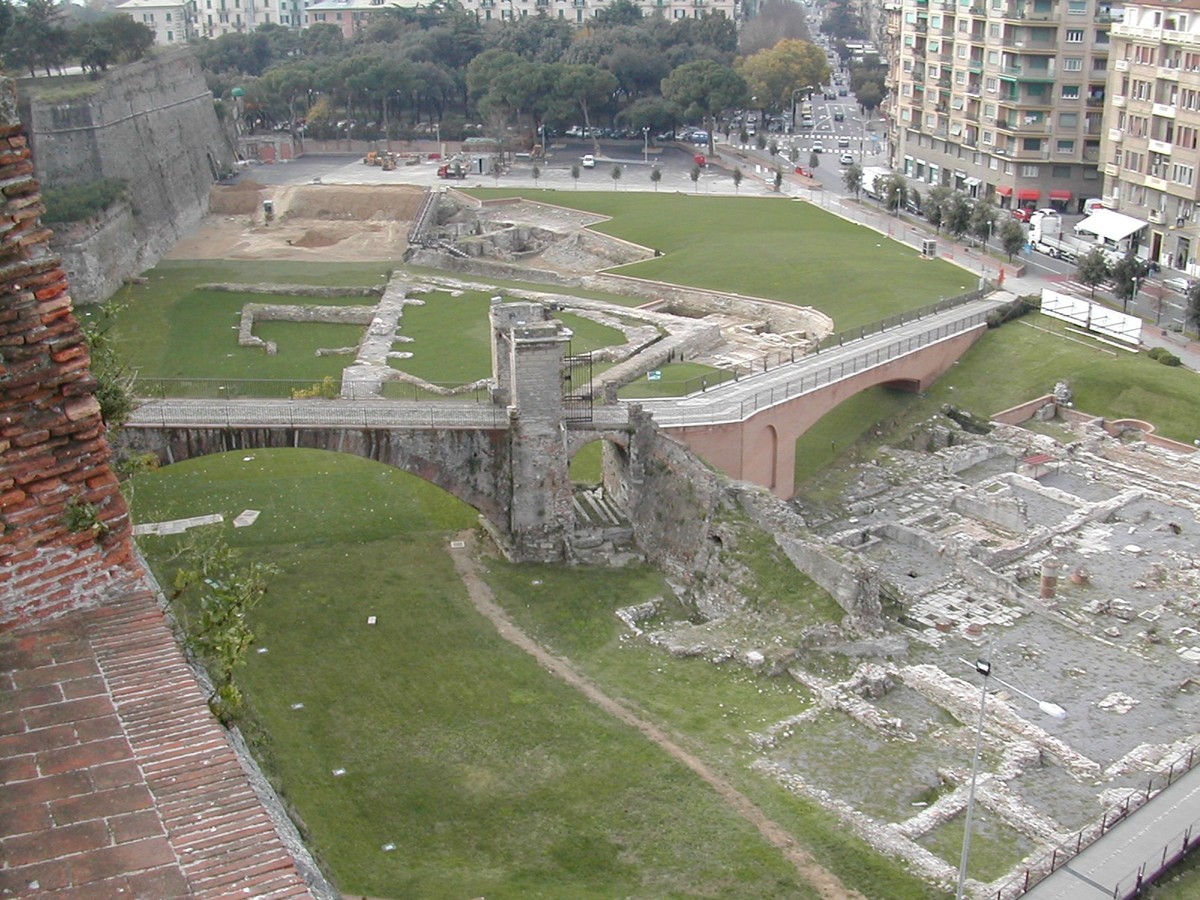To explore Savona , in utmost liberty without having to worry about public transport hurdles it is ideal to rent a vehicle.
It is not unusual to think of Savona only as one of the many cruise ports of call in the Mediterranean or as the third largest city in Liguria after Genoa and La Spezia. However, Savona is much more than that, it is a city of many more wonders , historically and culturally. Its centre is small and can be easily visited on foot in a few hours, but this does not detract from the fact that there are many more points of interest. If you wish to get to know this city better and visit it in its entirety, the advice is to rent a vehicle, so that you can move around in absolute freedom.
Here are some of the unmissable destinations in this city of art in western Liguria.
The Tower of Savona
This tower, which at first sight is not spectacular, is undoubtedly the most important building in the city. It was built in the 14th century and was once part of the walls that surrounded the city. It was in fact the place from which the sea was controlled due to its strategic position. Its name refers to Leone Pancaldo, a sailor who was Magellan’s companion during his round-the-world voyage.
The Priamar Fortress
This imposing fortress, the emblem of Savona, stands on the site of the first Savona colony, destroyed in 1528 by rival Genoa. Despite of the Genova attack , there are some sights which survived , for example, a cathedral, a mighty military bastion erected in 1542 and the Palazzo della Loggia (1417). In 1830, the fortress was turned into a prison and it was here that the patriot Giuseppe Mazzini (1805-1872) conceived the political association for the unification of Italy, the Giovine Italia.
Priamar Archaeological Museum
The Priamar Fortress today houses the city’s archaeological museum. The collection on display consists of works and objects found during regional excavations. Collections range from protohistory to the ancient and early medieval ages, remains of a Byzantine necropolis from the 4th and 7th centuries, as well as a collection of ceramics from the Mediterranean basin.
Civic Art Gallery
A chronological tour runs through 22 rooms where exhibits from the 13th century to the present day are displayed. Worth seeing are Renaissance works and some 15th-century sculptures, including the wonderful bas-relief of the Virgin and Child and a large carved wooden Crucifix.
One room is specially dedicated to the Crucifixion by Donato De Bardi, created between 1430 and 1440. This masterpiece represents a true artistic breakthrough for the period, bearing witness to the syncretism between the dramatic painting style of Northern Europe and the more expressive Italian style. The palace houses the canvases of the Fondazione Milena Milano contemporary art, with works by Magritte, Miró, Picasso, De Chirico and Hundertwasser.
Museum of Ceramics
Inaugurated in 2014 in the former Palazzo della Piété, this is a state-of-the-art museum. It exhibits more than a thousand pieces representative of the centuries-old craft tradition typical of the Savona . The tour is divided into four levels, divided into different sections in chronological and thematic order. Of note is the collection of blue and white apothecary jars (16th-17th centuries).
Cathedral of St Mary of the Assumption
The town’s cathedral has a beautiful 16th-century Baroque design. Worth seeing inside, a 15th-century crucifix above the high altar, a superb ciborium and.the relics of St Valentine. The real interest o is Savona‘s ‘Sistine Chapel‘, accessible through the cloister on the side of the right aisle, built between 1481 and 1484 at the request of Pope Sixtus IV to serve as a mausoleum for his parents. It bears no kinship or resemblance to the famous Roman chapel, if only by its name, named after Sixtus IV who commissioned both.
The chapel was originally rectangular , covered by a square apse and a hemispherical dome. Later, Giuliano della Rovere, nephew of Sixtus IV, finished decorating it with a cycle of frescoes and religious altarpieces. Today, an 18th-century restoration offers a totally different view of the chapel than it was in the 15th century.
The Rococo stuccoes have completely covered the original decoration, and show a decoration of flowers and cherubs, while the beautiful marble funerary monument, depicting Sixtus IV accompanying his parents in front of the Virgin has been moved to the left wall. In the same architectural complex, but rarely visited, are the private flats of Pope Pius VII, which Napoleon assigned as his residence in Savona between 1809 and 1812.



